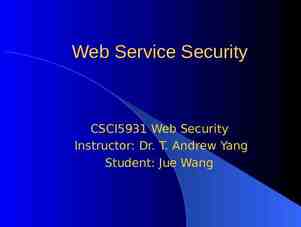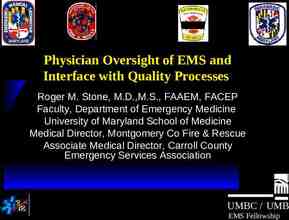Mentoring Paradigms for Underrepresented Groups in STEM
17 Slides484.68 KB
Mentoring Paradigms for Underrepresented Groups in STEM Scholarship Programs Jerry Dwyer, Kent Pearce, Brock Williams Department of Mathematics and Statistics 10 January 2013
MENTORING PARADIGMS FOR UNDERREPRESENTED GROUPS IN STEM SCHOLARSHIP PROGRAMS Model 1: One-on-One, Assigned Pairs
Model 1: One-to-One, Assigned Pairs South Plains Math Scholars Program [2007] NSF – Scholarships in Science, Technology, Engineering, and Mathematics (S-STEM) Scholarship program for students from low-income households Math Department faculty assigned to protégés by PI team Mentors and protégés expected to manage meeting schedule Very limited success
Model 1: One-to-One, Assigned Pairs Supplemental Mentoring Michael O’Boyle, Professor, Human Development and Family Studies Introduced himself as the “non-math” mentor Met with each protégé over lunch Provided opportunities for feedback on program and intervention
Model 1: One-to-One, Assigned Pairs Targeted Mentor-Protégé Matching Mentoring program revised on protégé feedback Mentor-protégé pairings restructured based on personalities and academic interests Somewhat improved success
Model 1: One-to-One, Assigned Pairs Noyce Scholars Program [2008] NSF – Robert Noyce Teacher Scholarship Program Scholarship program designed to recruit gifted math and science students into teaching positions at high needs schools Incorporated similar one-to-one faculty mentorship model Feedback indicated mentoring program felt “too artificial” Dominick Casadonte, Minnie Stevens Piper Professor, Department of Chemistry & Biochemistry Took on three protégés Led group mentoring sessions over meals
MENTORING PARADIGMS FOR UNDERREPRESENTED GROUPS IN STEM SCHOLARSHIP PROGRAMS Assessment Strategies
Assessment Strategies Mentoring Roundtables Sponsored by NSF – Innovation through Institutional Integration (I3) [2009] Roundtables offered faculty mentors opportunities to provide feedback Faculty recommendations led to the following changes: Creation of protégé training curriculum Restructuring of mentoring format (discussed later) Compilation and dissemination of faculty mentor training resources
Assessment Strategies Mentoring Studies Tara Stevens, Associate Professor and Program Coordinator, Educational Psychology Leading on-going study of Noyce scholar self-efficacy measures Provided feedback leading to positive program changes Levi Johnson, Mathematics Graduate Student and Assistant Coordinator of STEM Outreach Conducted study on impacts of faculty mentoring programs on faculty skills development Observed mentoring sessions from three major NSF scholarship programs (S-STEM, Noyce, PRISM)
MENTORING PARADIGMS FOR UNDERREPRESENTED GROUPS IN STEM SCHOLARSHIP PROGRAMS Model 2: Group Mentoring
Model 2: Group Mentoring Noyce Scholars Program [2008] Fall 2010 Onward Mentors and scholars attend weekly seminar meetings Each week is centered around a different math & science education topic Faculty and scholars discuss topics as peers – tone is very collaborative Seminar: “reason to meet”, structure, talking points
Model 2: Group Mentoring GK-12: Building Bridges: Integrating Mathematics, Engineering, and Science on the South Plains [2008] Fall Semester (2010 Onward) Semester: Mentors and scholars attend weekly seminar meetings Scholars prepare and give presentations relevant to their research which could be presented to high school audience Mentors and scholars give feedback and critique to presenter on presentation style, applicability, etc. Seminar: “reason to meet”, structure, talking points
Model 2: Group Mentoring GK-12: Building Bridges: Integrating Mathematics, Engineering, and Science on the South Plains [2008] Spring Semester (2011 Onward) Mentors and scholars transition from seminar setting to informal group discussions Group discussions: “reason to meet”, talking points
Model 2: Group Mentoring PRISM: Proactive Recruitment in Introductory Science & Mathematics [2010] Freshman (Cohort group of 12) Bi-weekly IS 1100 class meetings – “reason to meet” – structure – talking points
Model 2: Group Mentoring PRISM: Proactive Recruitment in Introductory Science & Mathematics [2010] Sophomores (Cohort group of 12) Each mentor is paired with a small research group (2-4 proteges) Research groups meet weekly , “explore” directed/focused subject Research group members will present their work – Sectional MAA Meeting – Local Undergraduate Research Conference Research groups: “reason to meet”, structure
Model 2: Group Mentoring (Contrasted) South Plains Math Scholars [2007] Fall 2012 Juniors & Seniors (Cohort remnants) – Fallout from Original Mentoring Model – Single Group Meeting (Missed? / Avoided?) Sophomores (Cohort group of 3) – PRISM Students Freshman (Cohort group of 6) – Half PRISM – Half non-PRISM






















